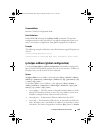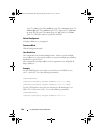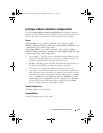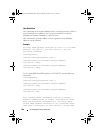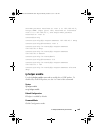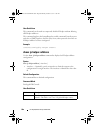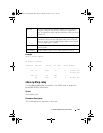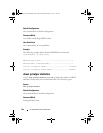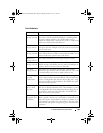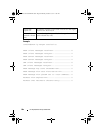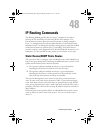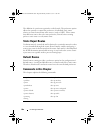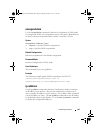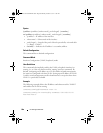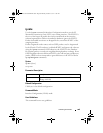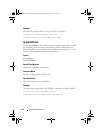
IP Helper/DHCP Relay Commands 963
User Guidelines
Field Description
DHCP client
messages received
The number of valid messages received from a DHCP client.
The count is only incremented if IP helper is enabled globally,
the ingress routing interface is up, and the packet passes a
number of validity checks, such as having a TTL > 1 and having
valid source and destination IP addresses.
DHCP client
messages relayed
The number of DHCP client messages relayed to a server. If a
message is relayed to multiple servers, the count is incremented
once for each server.
DHCP server
messages received
The number of DHCP responses received from the DHCP
server. This count only includes messages that the DHCP server
unicasts to the relay agent for relay to the client.
DHCP server
messages relayed
The number of DHCP server messages relayed to a client.
UDP client
messages received
The number of valid UDP packets received. This count includes
DHCP messages and all other protocols relayed. Conditions are
similar to those for the first statistic in this table.
UDP client
messages relayed
The number of UDP packets relayed. This count includes
DHCP messages relayed as well as all other protocols. The count
is incremented for each server to which a packet is sent.
DHCP message
hop count
exceeded max
The number of DHCP client messages received whose hop
count is larger than the maximum allowed. The maximum hop
count is a configurable value listed in show ip dhcp relay. A log
message is written for each such failure. The DHCP relay agent
does not relay these packets.
DHCP message
with secs field
below min
The number of DHCP client messages received with secs fields
that are less than the minimum value. The minimum secs value
is a configurable value and is displayed in show ip dhcp relay. A
log message is written for each such failure. The DHCP relay
agent does not relay these packets.
DHCP message
with giaddr set to
local address
The number of DHCP client messages received whose gateway
address, giaddr, is already set to an IP address configured on one
of the relay agent's own IP addresses. In this case, another device
is attempting to spoof the relay agent's address. The relay agent
does not relay such packets. A log message gives details for each
occurrence.
2CSPC4.XCT-SWUM2XX1.book Page 963 Monday, October 3, 2011 11:05 AM



